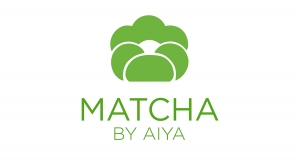01.08.19
Comax Flavors, Melville NY, has released primary research on consumers’ behavior, usage, and attitudes toward tea products, focusing on tea bags, ready-to-drink (RTD) tea, and tea powder mix.
This is the eleventh study of the company’s primary market research program. The tea study was fielded in May 2018 with 1,000 U.S. respondents aged 18-70+; half were female and the other half were male.
According to Persistence Market Research, the global tea market is expected to grow to $21.33 billion by 2024 with a CAGR of 4.0% between the period. North America is expected to remain the dominant region, accounting for 37.7% revenue by 2024.
“Tea has a natural, healthy-halo and has been steadily growing as consumers look for better-for-you beverages,” said Catherine Armstrong, vice president of corporate communications for Comax Flavors. “We wanted to explore and better understand tea consumption habits and usage among the general population.”
Comax has partnered with Amy Marks-McGee of Trendincite LLC to manage the market research program and Costello Creative Group to translate the data into infographics. Additional Comax studies include: alcohol, non-dairy milk alternatives, bread, coffee, condiments, dressings, dips and dipping sauces, crackers, juice, flavored water, nutrition and performance products, sweet baked goods, and yogurt.
Below are a few of the study highlights.
Tea Bag Findings: Among respondents who consume “Tea Bags” N=333
Ready-To-Drink Tea Findings: Among respondents who consume “Ready-To-Drink Tea” N=333
Tea Powder Mix: Among respondents who consume “Tea Powder Mix” N=333
Generations defined: gen Z born 1996 and later; gen Y born 1977 to 1995; gen X born 1965 to 1976; baby boomers born 1946 to 1964; silent generation born 1925 to 1945.
This is the eleventh study of the company’s primary market research program. The tea study was fielded in May 2018 with 1,000 U.S. respondents aged 18-70+; half were female and the other half were male.
According to Persistence Market Research, the global tea market is expected to grow to $21.33 billion by 2024 with a CAGR of 4.0% between the period. North America is expected to remain the dominant region, accounting for 37.7% revenue by 2024.
“Tea has a natural, healthy-halo and has been steadily growing as consumers look for better-for-you beverages,” said Catherine Armstrong, vice president of corporate communications for Comax Flavors. “We wanted to explore and better understand tea consumption habits and usage among the general population.”
Comax has partnered with Amy Marks-McGee of Trendincite LLC to manage the market research program and Costello Creative Group to translate the data into infographics. Additional Comax studies include: alcohol, non-dairy milk alternatives, bread, coffee, condiments, dressings, dips and dipping sauces, crackers, juice, flavored water, nutrition and performance products, sweet baked goods, and yogurt.
Below are a few of the study highlights.
Tea Bag Findings: Among respondents who consume “Tea Bags” N=333
- “Taste” is the most important attribute driving tea bag purchases with 68% of respondents citing it
- More than half (57%) of respondents cite “Flavor” as the second most important attribute driving tea bag purchase intent
- Tea bags are almost equally consumed with “Lunch” (41%) and “Dinner” (42%)
- “Green Tea” is the number one flavor consumed by all generations with 44% of respondents citing it
- More than a quarter (27%) of respondents drink “Plain/Original Black Tea”
- Shy of a quarter of respondents drink “Sweet Tea” (21%) followed by “Earl Gray” (20%) and “English Breakfast” (19%)
Ready-To-Drink Tea Findings: Among respondents who consume “Ready-To-Drink Tea” N=333
- “Taste” is the most important attribute driving RTD tea purchases with two-thirds of respondents citing it
- Shy of two-thirds (63%) state that “Flavor” is the second most important attribute driving RTD Tea purchases
- 74% of respondents drink RTD tea with “Lunch” while 60% drink it with “Dinner”
- “Lemon” is the most popular flavored consumed by all generations with shy of half (48%) citing it
- More than a third (39%) of all respondents equally consume “Sweet Tea,” and “Green Tea”
- More than a third of respondents consume “Peach” (38%), “Plain/Original” (35%), and “Half & Half” (34%)
- Shy of a third of respondents drink “Raspberry” while shy of a quarter drink “Green Tea Combinations” (21%)
Tea Powder Mix: Among respondents who consume “Tea Powder Mix” N=333
- 59% of respondents cite “Taste” as the most important attribute driving tea powder mix purchase intent
- Two-thirds of respondents use tea powder mix with “Lunch” (68%) while more than half use it with “Dinner” (57%)
- 61% of respondents consume “Lemon” making it the number one flavor among all generations
- “Sweet Tea” (41%) and “Half & Half” (41%) are tied for the second most popular flavor among all generations
- Among all generations, gen Y and gen Z are the heaviest consumers of “Sweet Tea”—gen Y (48%) and gen Z (48%)—and “Half & Half”—gen Z (60%) and gen Y (46%)
- “Peach” (38%) and “Raspberry” (36%) are popular flavors with more than one third citing it while shy of a quarter consume “Blackberry Pomegranate” (24%)
Generations defined: gen Z born 1996 and later; gen Y born 1977 to 1995; gen X born 1965 to 1976; baby boomers born 1946 to 1964; silent generation born 1925 to 1945.
























